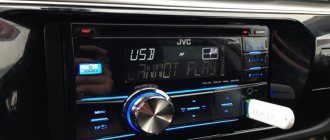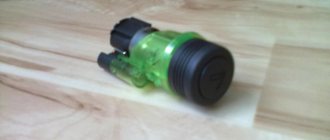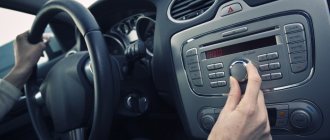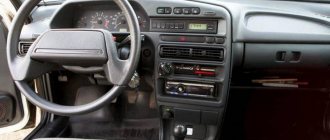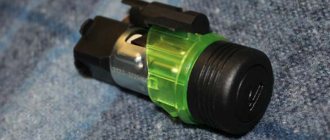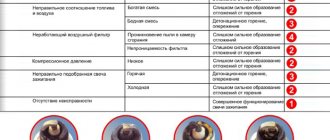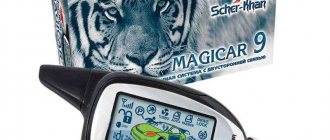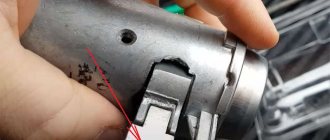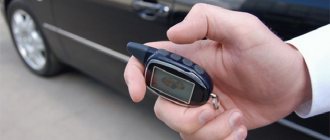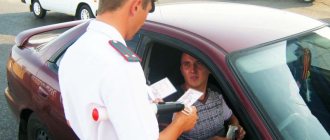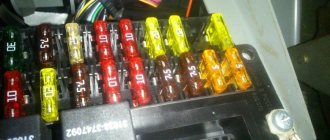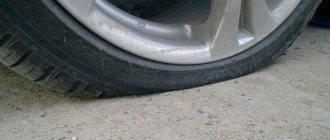Why does the radio tape recorder not read the flash drive?
A common reason why the radio does not read a flash drive is the file system of the storage device. Most older models are designed to work in the FAT 16 and FAT 32 systems. For modern standard devices, the flash drive format for the car radio is most often NTFS. For the USB media to be in a supported format, it must be formatted. To do this you will need a computer or laptop.
Which radio do you recommend buying?
The reason for the radio freezing or completely refusing to read information from digital media may be the volume of the latter. To solve this problem, it is recommended to study the technical specifications of the device. Another option is the selection method. A USB drive, for example, with a capacity of 8 GB, is installed in the car radio connector. If the connected device is not supported, the radio will not play sound. In this situation, take a flash drive whose memory size is smaller, for example, 4 GB, and try connecting again.
Some radios are designed to read only small volumes. For this reason, a flash drive with a size of 1 GB may be suitable.
Any device has a limited service life. Therefore, the cause of the malfunction may be a failure of the flash drive. To test this, you will need another device to play the recorded music. This can be done, for example, on a speaker (with a USB port).
If the device is working properly, has the appropriate file system, a suitable volume, works on other music installations, but you cannot listen to music in the car, the reason may be an incorrect recording.
Problems can also arise due to a malfunction of the reproducing equipment. This often happens when the radio has an Internet connection function. A car gadget may be infected with a virus, which will cause the device to malfunction.
Incorrect connection of the digital media is also one of the reasons that can become an obstacle to listening to songs in the car. In most cases, this problem occurs among car enthusiasts who have old equipment that does not have an appropriate input, i.e. The flash drive is connected via an adapter or other means.
The flash drive connector is faulty. This technical problem often occurs if the drive is removed incorrectly (torn out).
Car radio with USB input
h2 1,0,0,0,0—> p, blockquote 5,0,0,0,0—>
Most modern car radios have a USB input for reading audio files from a flash drive. This method of storing and reproducing audio information is more reliable, noise-resistant, informative and convenient from a consumer point of view than CDs and DVDs.
p, blockquote 6,0,0,0,0—>
Many manufacturers are gradually abandoning disk drives in favor of USB and other electronic storage media.
p, blockquote 7,0,0,0,0—> adsp-pro-1—>
However, the playback method via a USB port has one fundamental drawback: some flash drives and various car radios refuse to be read. Moreover, a situation very often occurs when one radio tape recorder reads the same flash drive without problems, but the other completely refuses to “see” it.
p, blockquote 8,0,0,0,0—>
What format of flash drive is needed for the radio?
Format—drive file system. There are 3 main ones: FAT32, NTFS, EXT. The last 2 are not used for radios.
The FAT32 (File Allocation Table) format is understood as the standard version, which was created from the previous FAT16. Almost not supported due to being outdated.
FAT32 is a special table where files and information are located in a given sequence. This uses 32-bit cluster addressing. Now this system has been maximally improved.
FAT32 is a flash drive format for car radios, although it is the simplest. But complex data will not be stored on such a medium either.
Choice
Not only a special flash drive format is needed for the radio. This type of storage has become one of the most common. In addition to the file system on the flash drive, attention is paid to other criteria for choosing a device for a radio in a vehicle.
It is necessary to take into account the specifics of turning on the radio in the car. Since the USB connector may be located in the front, a large flash drive will break. The nest may also be damaged. Therefore, you need to choose a small option that will not stick out too much and interfere.
A small device should be well protected. The flash drive will work in any weather with temperature changes, vibration and other unfavorable factors.
Because of this, malfunctions in its operation may appear over time, so it is better to choose the most reliable option.
It is necessary to pay attention to the volume of the media. It is best not to choose a flash drive with too high an indicator, since the radio may not see the files. A good option is 4 GB. You can upload a large number of musical compositions there. Suitable for both old and new car radios. You can additionally check drives with larger capacities. If everything functions stably, then you can take this option.
Several options for good flash drives for car radios:
- Apacer Handy AH134. Looks like a car key. It is small in size, convenient in shape and waterproof. The body is solid. Models with a capacity of 4 and 8 GB are sold.
- HP V165W. The device can operate at air temperatures of +0…+60°C. There are volumes up to 32 GB.
- Kingstone Micro. The device has a special hole where you can thread a rope or keychain. The body is stamped from the inside. This option is less durable. It is suitable for those who do not plan to often remove the flash drive from the connector.
- PQI U280L Button Disk. The case has special hooking elements to make it easy to remove the device from the connector. But it is not necessary to remove the flash drive, since it can be left in the car overnight. This model can operate at temperatures ranging from -20...75°C.
- Pretec iDisk BulletProof. Manufacturers claim that the device can withstand even being shot with a bullet. The downside is its large dimensions, so it should be used carefully. The case itself is durable, but the socket can be damaged. Options with memory from 2 to 32 GB are sold.
How to format correctly
To correctly format a flash drive for a car radio, you need to insert it into a USB connector on a computer or laptop. Afterwards, you need to right-click on the icon of the device itself and select “properties” from the drop-down context menu. Next, a window appears where the format - the type of file system - is displayed under the name of the media.
If this format is not readable in the car, you need to format the flash drive for the radio:
- Right-click on the media.
- Select the “format” tab.
- Select FAT32 format.
- Click the “start” button.
After some time, the format will be converted to the required one. Then you can transfer all the data back to the media.
It must be remembered that after formatting the flash drive, all files on it will be deleted.
It is best to simply save the data on a computer or other storage device.
Sometimes the radio cannot work with the selected drive and displays an error. In this case, you need to format the flash drive so that the radio can read it.
How to record music
Before you record music onto a flash drive for your car radio, you need to take some preparatory steps.
The algorithm of actions is as follows:
- Determine the file system and select the correct one. Please note that the radio will support FAT32. If necessary, format the media.
- Select the correct file format for the recorded song from your computer. Almost all car radios have an MP3 option. If the files have a different extension, then you can either convert them or find a replacement composition, but with the required format. For the first option, the Format Factory program is suitable. You will need to drag the file into the work area, select the appropriate format in the window, and then click “OK”.
- Copy and record music to a flash drive for the radio. To do this, you need to insert the media into the appropriate slot. Then open the folder where the music is stored and copy it (right-click to select the “copy” function). Then open the drive itself and insert the files (right-click to select “insert” from the drop-down menu).
After this, all selected files will be located on the flash drive. It can be pulled out of the connector on the computer and connected to the radio.
How to make music scatter
If music tracks in a car are constantly played only in the same order, then you want variety.
There are several methods on how to arrange them so that they are included in the spread:
- Total Commander program. This is a file manager. Additionally, you need to install the special Random WDX plugin. It is intended specifically for mixing files. You need to run the program and select the folder on the flash drive where you want to mix the songs. Then you need to select the “Group Rename” function. In the window that opens, you need to create a “Renaming mask”.
- ReNamer program. It is designed to rename files. After installing it, you need to open “Add files” and select those that are needed. You can select the entire folder. Then, through the “Filters” function, a mask is selected for further renaming. Additionally, you need to select the “Randomization” item. All that remains is to click the “Rename” button.
- AutoRen. After installing such a program, you need to open the necessary folder with music. Then, in the “Symbols” section, perform a rename with the “Random” function.
- SufflEx1. This program rearranges files in a folder. You need to install it and click the “Shuffle” button.
All these programs rename files, so that later the songs will sound random when played on the radio.
The flash drive can’t be read: how to identify and fix the problem
The flash drive doesn't play. What is the reason?
- The flash drive is broken. To understand that it is broken, you need to try to connect it to some other device, for example, to a computer, laptop, or to another tape recorder with a USB connector that is known to be working. If he does not see it, the indicator on the flash drive does not light up - then, as a rule, you can put a cross on it. You, of course, can try to revive it in the service, but this is quite expensive, the costs will not justify themselves. It's easier to buy a new one. Another question is if there was valuable information there. Then it’s worth tinkering and trying to revive the drive.
- Viruses. Today, viruses affecting electronic files are quite common. Therefore, it is worth checking it for viruses using antivirus programs. As a rule, they are installed on computers and laptops. If not, then you can download a one-time program, for example, a healing utility from Dr. Web and check the content.
- Different file systems for the media and the reading device. Problems with the file system may appear when this drive is connected to the radio for the first time or after formatting. The fact is that car tape recorders, as a rule, work with certain file systems. Which ones can be found in the instruction manual. Most often this is FAT32, but it can also be NTFS or FAT. Therefore, after studying the instructions and identifying the required file system for your car radio, you should connect it to the computer and format it, transfer it to the desired file system.
Important to remember! Formatting deletes all files from the device, so if there is something important there, you should first copy the information to another drive.
- Incompatibility of audio file formats. If the flash drive works, but a certain song or several pieces cannot be played, then the problem is related to the format of the audio files. You can find out which files are suitable for your radio from the same operating instructions. After that, simply download the songs in the desired format. If suddenly you couldn’t find something, audio file converter programs will come to the rescue.
- File name error. If the flash drive does not play certain songs, then the reason may also be related to the file signature. The problem is that some devices do not see the file if it is written in Cyrillic. In order for everything to work, you just need to rename all the files and write their names in Latin.
- Error in file description. These are the so-called tags. They may interfere with reading this or that audio file. This happens with old audio recordings, with files from the 90s. Tags are removed using appropriate software.
- Media volume. A large flash drive can also cause the flash drive to be unreadable. Older models of tape recorders are simply not able to see large USB drives. Their ceiling is 2–4 GB, and for some, well, very outdated models, even 512 MB.
Formatting procedure
In order for the radio to be guaranteed to recognize a flash drive, its file system format must comply with the FAT32 standard. Of course, some modern equipment of this type can also work with the NTFS file system, but not all radios can do this. Therefore, if you want to be 100% sure that the USB drive will fit the device, you need to format it to FAT32 before recording audio files. Moreover, it is important to perform the process in exactly this order: first formatting, and only then copying musical compositions.
Attention! Formatting involves deleting all data on the flash drive. Therefore, if files that are important to you are stored on it, be sure to transfer them to another storage medium before starting the procedure.
But first you need to check what file system the flash drive currently has. It may not need to be formatted.
- To do this, connect the flash drive to the computer, and then through the main menu, a shortcut on the “Desktop” or the “Start” button, go to the “Computer” section.
- The specified window displays all drives connected to the PC, including hard drives, USB and optical media. Find the flash drive you are going to connect to the radio and right-click on its name. In the list that appears, click on “Properties”.
- If the “File system” option is “FAT32”, this means that the media is already prepared for interaction with the radio and you can safely record music on it without additional steps.
If the name of any other type of file system is displayed opposite the specified item, you should format the flash drive.
Formatting a USB drive into the FAT32 file format can be done either using third-party utilities or using the functionality of the Windows operating system. Next we will look at both of these methods in more detail.
Method 1: Third Party Programs
First of all, let's look at the procedure for formatting a flash drive in FAT32 format using third-party programs. The algorithm itself will be described using the Format Tool as an example.
- Connect the USB flash drive to your computer and activate the Format Tool utility as an administrator. From the drop-down list in the “Device” field, select the name of the USB device that you want to format. From the "File System" drop-down list, select the "FAT32" option. In the “Volume Label” field, be sure to enter the name that will be assigned to the drive after formatting. It can be arbitrary, but it is highly desirable to use only letters of the Latin alphabet and numbers. If you do not enter a new name, you simply will not be able to start the formatting procedure. After completing these steps, click on the “Format Disk” button.
- Next, a dialog box will open in which a warning will be displayed in English that if the formatting procedure is launched, all data on the media will be destroyed. If you are sure of your desire to format the flash drive and have transferred all valuable data from it to another drive, click “Yes”.
- After this, the formatting procedure starts, the dynamics of which can be observed using the green indicator.
- After the process is completed, the media will be formatted in the FAT32 file system format, that is, prepared for recording audio files and then listening to them through the radio.
Method 2: Standard Windows tools
The file system of a USB drive can also be formatted in FAT32 using exclusively the built-in Windows tools. We will look at the algorithm of actions using the Windows 7 system as an example, but in general it is suitable for other operating systems in this line.
- Go to the Computer window, where your connected drives are displayed. This can be done in the same way as was described when we looked at the procedure for checking the current file system. Right-click on the name of the flash drive that you plan to connect to the radio. In the list that opens, select “Format...”.
- The formatting settings window will open. Here you need to perform only two steps: in the “File system” drop-down list, select the “FAT32” option and click on the “Start” button.
- A window will open warning you that running the procedure will destroy all information stored on the media. If you are confident in your actions, click “OK”.
- The formatting process will start, after which a window with the relevant information will open. Now you can use the flash drive to connect to the radio.
If the flash drive does not want to play music when connected to the radio, do not despair, since it is quite likely that it will be enough to format it using a PC into the FAT32 file system. This can be done using third-party programs or using the functionality that is already built into the operating system.
Possible problems and solutions
Although the process of recording music onto a flash drive is extremely simple and straightforward, from time to time car owners encounter various errors that prevent the playback of audio tracks in the car radio.
Why doesn't the radio see the flash drive?
The car radio does not perceive or read the USB drive inserted into it. Most often, the reason lies in the fact that the car owner is using a flash drive with too much memory. Therefore, it is recommended to study the instructions for the car radio and see what is the largest volume it can reproduce.
If the file system is NTFS, file playback may not be possible.
What should the file system be like?
The car radio may also refuse to “see” and play music if the flash drive uses the wrong file system. Often, audio systems support flash drives that use the FAT32 file system, so if it is different, for example, NTFS, then playback will be impossible.
To check the file system of your media, you need to connect it to your computer, find the flash drive in “My Computer” - right-click - select “Properties”, after which a small window will open where you need to find the “File system” item. If the NTFS system is listed there, then you should format the USB flash drive in the FAT32 file system.
Also, users of different car radios may encounter different system error notifications when using flash drives. Thus, owners of Pioneer audio recorders quite often encounter the “ERROR-23” error, which indicates that the flash drive is formatted using an incompatible file system. This problem can be easily and quickly resolved by properly formatting the flash drive on your computer.
Error “ERROR-23” indicates that the flash drive was formatted using an incompatible file system
Why are music files not being read?
The drive uses the correct file system and has an acceptable capacity, but the radio refuses to play music. It even happens that just yesterday the flash drive “played”, but today it doesn’t. In this case, you need to connect it to your computer and try to listen to your favorite songs from it.
If the drive is detected, regardless of whether it is possible to play music from the PC or not, most likely, errors have accumulated on the flash drive. Formatting the device will help get rid of them. If the media is not detected, then the flash drive is simply out of order, which means its further use is impossible.
Video: what to do if there is no music playing in the car
What should be the volume
Most audio systems in cars are capable of working with flash drives, the memory capacity of which ranges from 2 to 8 GB. However, there are removable drives on the market today with a capacity of 16 GB or more. Therefore, before purchasing high-capacity flash drives, you simply need to find out how much memory the car radio can “withstand”.
When choosing a flash drive, drivers should pay special attention to the format, capacity, standard and size of the removable media. The ideal option, provided that other technical parameters are met, is a removable drive in the form of a keychain. Such a flash drive will not get lost on the road or at home, and will always be “at hand” for recording the next audio file.
Volkswagen Jetta 2012, 105 l. With. — car audio
Cars for sale
Volkswagen Jetta, 2013
Volkswagen Jetta, 2015
Volkswagen Jetta, 2011
Volkswagen Jetta, 2014
Comments 13
there is a problem with crookedly named files... this happens to me sometimes...
there was even something like this - when you click the next folder, and it turns on the same song - Damn Larisa Dolina))))) I suffered for so long until I found this Larisa and deleted it)))))
and there are freezes from time to time))
The problem was completely solved by using a flash drive format and only having music on it... for two weeks now, not a single glitch!
and I deleted the crooked music and everything became normal) and crooked folders)) there are also glitches with Russians) sometimes)
Most likely, it needs an absolutely clean matted flash drive, so that there are only MP3s, otherwise there may be glitches. So far it's working fine!
there was such garbage, the flash drive was not readable for some time. It turned out to be a broken file.
Now I have made a completely flash drive format. I'll try. It is possible that non-media format files can knock down the flash drive itself.
easily... and be sure to format it in fat 32, ntfs will not read it!
ntfs yes... for the most part this is a Windows format.
ntfs yes... for the most part this is a Windows format.
yes, only normal radios read it)
Rules for downloading music from the Internet
Many resources that have huge collections of popular music from around the world operate on a paid basis, leaving only some tracks free. Many inexperienced users fall for this and pay money monthly to receive the latest news. Often, this playlist is not updated or is updated irregularly. Therefore, when downloading music to your computer, you need to follow the main rule - use only free offers.
To check the ability to play, you can try to play the tracks using the player on your computer
In addition to this, our editors offer a number of recommendations that should be followed when using music from various sites.
- It is better to search for resources with collections in well-known Russian-language search engines such as Yandex or Google.
- When you try to download a track you like, several links appear that require you to click to get to the “Download” button. This is not worth doing. There is a high risk of “catching the virus.”
- Before directly downloading audio files from the network, it is better to install an application such as USB-Security on your computer. This will block the passage of an infected file to the flash drive.
- If there is no similar program, it is better to leave your antivirus program always on, especially when working with various pages on the Internet, including music portals.
- To download songs to the browser, it is better to attach a separate folder and set up automatic saving of information in it. It can even be stored on the local drive “D”.
According to experts and IT specialists, the best sites for downloading are those on which the download occurs immediately after clicking on the “Download” button.
How to format a flash drive, instructions
I repeat once again that after formatting, all data will be irretrievably destroyed. Therefore, if you can save the data to your computer, be sure to do so, or you will lose everything!
1) Insert the “flash drive” into the USB port of the computer. It is recognized as a removable disk. Be sure to remember the letter. I have it "G"
2) Copy the data, if possible.
3) Next, right-click on the “removable disk” and look for the format option in the menu. Let's choose it.
4) A warning appears that all data will be destroyed. Click "OK". Next, you need to select the parameters - the FAT32 file system (it is desirable), you can set your own volume labels (media name), I personally named “Music”. Check the box for quick formatting. Click “start”.
More about Nissan: Door hinge for Nissan Nissan Primera P11E 1996-2002
5) After formatting, the message “formatting complete” will appear.
6) Your entire “USB drive” is formatted and ready to go. Now it's called "MUSIC". After this, you can “upload” the music back.
After these steps, 90% of the devices will work in the car. Personally, mine worked and is still working to this day.
However, if you can’t read it again, the same picture happens with others (take it from friends), then you need to go to a service center - the problem may not be in the drive, but in the car radio itself.
By the way, you can secure all sorts of little things, for example a phone or a radar detector, using a “sticky mat for a phone in a car.”
Now there is a video version of the article, useful!
That's all for me, I think my article was useful to you. Sincerely yours, AUTOBLOGGER
votes, average: 4.40 out of 5)
How to connect to a car radio
To connect a music storage device, it must be inserted into the appropriate connector. It is not recommended to do this procedure with the radio turned on, because The device software may crash. But even if you ignore this advice and insert it into the connector, in most cases the equipment automatically switches to playing music from a USB drive.
You can connect a flash drive to a car radio, not only when the equipment has the necessary connector.
USB adapter from mp3 player
To connect a USB drive to the standard radio, you will need a player that can read information from the corresponding media. An mp3 player must have a headphone jack. You will also need a soldering iron.
The modification work begins by removing the CD drive from the radio. Power for the player will be taken from the standard device. Additionally, a voltage converter is required. It is necessary to ensure that the player does not burn out. A signal is taken from the player’s output and will be fed to the input of the AUX radio. The connecting cable must be shielded. On the car radio board you should find the audio input contacts. The wires from the mp3 player are soldered to them.
The space freed up from the CD player in the radio is used to install the player.
DIY adapter
To make an adapter, you will need a wire from old headphones, a tulip connector and a 4-core copper braided wire. The standard device must have an AUX connector. The headphone wire is stripped. After removing the insulation, solder the right and left channels to the tulip (to the middle connectors). The main wire is connected to the steel rod of the tulip. On the radio, you should find the external audio signal output and connect an adapter with storage media to it.
To play music in the car, you will need to activate the AUX mode.
Connecting to AUX
Even when the car radio does not have an AUX output, you can connect a flash drive to it. For remodeling you will need the following materials and tools:
- soldering iron;
- connection cable;
- 3-pin stereo jack;
- screwdriver;
- multimeter
After dismantling the car radio, they begin to remove its protective casing. You need to find the RCH and LCH connection points on the board. A signal will be sent through them. Using a soldering iron, you need to connect one wire to ground. 2 more wires are soldered to the channels (right and left). The wires are brought out and the audio connector is soldered to them. The media will be connected to it.
If you are not sure that you will be able to connect a USB flash drive yourself when there is no corresponding connector, it is better to contact a specialist. Otherwise, incorrect performance of the work may cause a short circuit and damage to the old but working radio. In such a situation, you will have to purchase new equipment for your car.
An alternative option could be an FM modulator. The device is inserted into the cigarette lighter. Some modulator models are equipped with Bluetooth, a microphone and a connector for USB devices. Thanks to the audio output, it can be connected to a radio.
What does this error mean?
Manufacturers produce players that only read the *.MP3 extension. If there are files on the drive that are not playable by the device (this includes *.EXE, *.COM, *.BAT, *.DOC, *.PDF formats) or the document names contain Cyrillic, the system will display error 19, and the Pioneer radio will not will play music. This means that the built-in controller does not see the flash drive or cannot decode the information on it. A large number of attachments in folders can also lead to a similar problem.
In a similar way, error 19 appears on the screen when connecting a phone or smartphone to the Pioneer radio. The connector is designed for a current of no higher than 0.5A, although the permissible current when connected via USB, according to manufacturers' information, can reach 1A.
You should use the car radio with caution when charging via USB. If the battery charge level is close to zero, a current of 2A will be required, which is unacceptable and will result in error 19 appearing when connecting a phone or other device to the radio. According to the instructions, it is prohibited to remove any drive during playback, as this may cause cause many malfunctions and costly repairs.
Are you a car driver?! Then you can take this simple test and find out. Go to test »
The technical condition of the player must be at the proper level. Excess moisture, overheating of elements, mechanical damage - all this negatively affects the quality of work.
Another reason may be incompatibility of the equipment with the head unit.
Not every flash drive will be accepted by the device; these include drives containing files larger than 16 GB.
Since this article aims to highlight problems caused by the fact that the Pioneer radio does not read the flash drive, we will focus on this issue. In this case, error 19 means the presence of damaged files or formats that cannot be played.
If the files are not MP3
If it happens that your music is not in MP3 format (which is very rare), we can always convert it the way we need it. To do this, you can use any converter installed on your computer. This option is suitable if there is a lot of music. But the easiest way is to use an online service. For example, this could be online-audio-converter.com.
- Open the site and drag the music you want to convert into the window.
- We are waiting for the process to complete.
- Download files in the required format.
Now all we have to do is move the finished MP3 songs to our flash drive.
What does error 19 mean?
Failure with code number 19 is displayed on Pioneer radios if the flash drive contains files with an unsupported extension. For example, the music should be in MP3 format, but a file in TXT format accidentally ended up on the USB drive. This message also appears when the radio does not see the connected device. Depending on the player model, the error may be displayed in both Russian and English.
Error 19 on the Pioneer radio
How to decipher the error code and fix it
Some “smart” car radios report information on the display that they specifically do not like about the USB storage device.
For example, these error codes:
- ERROR 23 – FAT32 or NTFS file system mismatch;
- ERROR-PROTECT – absence of Windows Media codec in the radio;
- CHECK USB – USB port power supply error;
- ERROR 19 – Cyrillic in file names, complex hierarchy, lack of an appropriate codec, etc.
For other types and error codes, please refer to the owner's manual for your specific brand of car stereo.
Error 23
On the radio display, error 23 is marked as ERROR-23. Most often this problem occurs on Pioneer radios. The reason for its appearance is that the installed drive is formatted in one of the FAT systems, while the radio “understands” only the NTFS system. Solution: reformat the drive from FAT to NTFS as described above;
How does the radio itself tell you the reasons for the error?
Before taking any action, you need to carefully look at what is shown on the screen when pairing an audio device with a flash drive. Car radios "Pioneer", "Sony", "Kenwood" and others display an error code indicating the reason for failure to read. If there is no reaction to the inserted media, the problem may lie in a faulty USB connector.
Audio system manufacturers have not developed universal codes to identify problems. For the specific model, the meaning of the symbols should be found in the instruction manual. Frequent errors when it comes to flash drives:
- "23". The file system of the removable storage device is incorrect.
- "PROTECT". The device does not support playback of the recorded format.
- "CHECK USB". The indication appears when there is a problem with the USB connector of the audio device itself.
- "19". The error warns that the recorded files have names in Cyrillic, and the system cannot read them. In addition, the code may appear due to a complex hierarchy or the presence of folders that cannot be opened.
If the car radio no longer recognizes removable media, there are many options for solving the problem. In some cases, elementary measures can correct the situation. If the flash drive or player fails, it will need to be repaired, formatted or replaced.
Reasons for lack of work functions
First of all, you need to identify the root cause why the radio tape recorder stopped seeing the flash drive. If equipment for listening to music purchased in a store cannot be listened to from the media, then you should send it in for repair under warranty.
Before this, you need to check it by inserting a new flash card into the computer and making sure that it is in working order, insert it back into the music device. If the work is not restored, then the essence of the problem should be attributed to warranty repairs. The main reasons why any radio model, including the Pioneer, does not see the flash drive include the following:
- Damage to the connector at the junction of the storage medium with the music equipment. This moment occurs when the movements during connection and removal are performed inaccurately;
- Poorly performed work regarding the internal wiring of the system leads to damage or breaks. Result - the Pioneer radio does not see the information card;
- If the radio sees music on the flash drive, then the chip or board that is responsible for playing music from the flash card may be damaged;
- A mandatory procedure is to check the equipment for the operation of the radio and disks. Perhaps it doesn't work at all;
- Faulty state of the memory source. Outgoing contacts or a burnt-out microcircuit responsible for control prevents this device from functioning normally;
- The control buttons located on the equipment and responsible for playing melody from a portable device have stopped working correctly;
- Software error. This is another problem why the radio tape recorder stopped seeing the flash drive. If detected, you must immediately contact the service center to eliminate it;
- Inconsistency with model specifications. The Pioneer radio does not see the flash drive, since it should be remembered that it does not see flash cards larger than 8 GB, much less 16 GB. Because maintaining them requires more power than it can provide;
- The priority of the folders on the memory card is incorrectly set. In this case, it is recommended to check if the checkbox located in the folder settings is checked, because this permission reads them only on a specific computer;
- The content needs to be formatted or completely cleared. This may be necessary if a virus has penetrated and deleted all data, and the radio is not able to open the information because it has ceased to exist;
- Recorded file formats do not match. Instead of mp3, the FLAC or AAC formats are installed, which are supported by quite a few devices.
After identifying a breakdown and establishing the specific cause of its occurrence, everyone wants to know what to do to fix it.
Common fixes for this problem
To eliminate an unpleasant situation and get an answer to the question: “What should I do?” Perhaps you can learn from these steps:
- Format. First, the files are checked to see what extension they are recorded with. If they meet the stated requirements, then the entire drive is formatted. The entered data is copied to it again. This process is done in this way: a portable device is connected to a laptop or computer, the “removable storage” section is located and the right mouse button is clicked on it. Next, it is recommended to select the “format” button and select FAT32 in the menu that appears. If, at the end of this procedure, the memory card is detected on the PC, but not on the car radio, then the fault is in the music player.
- Synchronization. The file system of the portable storage device is being checked. Most often, the FAT32 system is present in the radio settings. It is worth checking before operation because it may be locked to the NTFS system function by default. After synchronization is completed on your computer, you need to open the properties of the flash card by changing the type of file system.
- Connector compatibility. This is a particularly important point. Because you need to select a removable device in accordance with the connectors presented to it, USB 1.0, 2.0, 3.0. Thus, if the most advanced version is connected to an outdated version, then a program conflict occurs and the radio does not read the card.
To solve this problem, when buying a memory card, be sure to read the characteristics with what capacity of the removable card, namely less than 8 GB or more than 16 GB, a car radio, for example Pioneer, is compatible. And also know the main points that will allow you to correct the problems that arise.
Radio firmware
All modern digital devices, including car radios, have software responsible for the correct operation of the equipment. If various problems occur, problems with the firmware are suspected. An example is the occurrence of difficulties when trying to open a file on a car tape recorder, while other equipment of this type immediately plays songs. First look at the USB drive, it should be working properly.
When deciding what to do if the radio does not see some MP3 files, you must first check their parameters. If the basic characteristics are the same as the rest of the songs, it suggests software errors. In this case, you need to update it or reflash the radio.
How to check the functionality of a flash drive?
The fastest way is to try to play the drive from another device. The best option is a computer whose operating system reads all possible file system formats.
You can check the serviceability of the radio by trying to insert other flash drives. If it reads, then the problem is in your drive. Why don't you buy a new one?
We have looked at all the possible reasons why music from a flash drive does not play in the radio, or the device does not read it correctly. Methodically eliminate all options until you find yours. We wish you good luck in your search!
What are the advantages of modern USB drives?
In the last few years, flash drives have been the most popular among car owners, as they allow you to quickly record your favorite audio tracks. This cannot be said about recording audio onto CDs, for which a laptop or computer must at least have a CD drive, as well as a special utility (for example, Nero or DAEMON Tools).
Another advantage of USB drives is their compact dimensions and large amount of built-in memory (flash drives with a memory capacity of 256 GB or more are available on the market).
The main advantages of flash drives: compact dimensions and large memory capacity
Flash drive malfunctions
It often happens that the flash drive itself is faulty, and it is not recognized as a device not only on the radio, but also on the computer, in which case it is better not to try to restore it, it is more advisable to replace it with a new USB drive. The most common causes of flash-USB failure:
- mechanical impact, although the flash drive often works even with a broken case;
- water ingress - if moisture gets into the removable disk housing, it is better not to connect the device anywhere, first try to dry the board;
- natural aging - there are no eternal devices, sooner or later any equipment breaks down.
If the radio is not capable of playing audio files due to the large memory capacity of the flash drive, there is hardly anything that can be done; it is easier to buy a smaller capacity USB drive for use in the car.
Other useful tips
Remember a few more basic tips:
- Do not use flash drives larger than 4 GB for the radio;
- Check if the files are in a valid format;
- It is rare, but it happens that the radio does not read files that have Russian names or Russian letters in it;
- Insert and remove the flash drive carefully;
- Do not repair a broken radio yourself - today this is a complex electronic equipment that only professionals with special knowledge and equipment can understand.
As you can see, a car radio may not read a flash drive for a variety of reasons.
What's going on with the radio?
In fact, the reasons can be very different. Here are a few of the main ones that prevent you from listening to music most often.
- Wrong format. You downloaded music in a convenient format, but it doesn’t suit the radio at all.
- The virus “ate” the data from your card. Or the flash drive has malfunctioned and the radio does not notice it.
- Wrong volume. It happens that the radio can only read flash drives of a certain size. It is best to read the instructions, where these nuances should be prescribed by the manufacturer.
What's the result?
As you can see, the actions discussed above in some cases allow you to achieve the desired result. If the drive is completely out of order for one reason or another, you can always buy a flash drive for music in the car at an affordable price.
In this case, it is more difficult with a radio (especially the standard one). You need to check the radio connections, reboot the device, update the firmware, etc. If such simple methods of restoring functionality do not help, then repairs are needed.
Finally, we note that at first glance the problem may seem large-scale, but in reality everything is not so critical. If the repair is too expensive, and the problems are related only to the USB connector, you can try an AUX instead of a flash drive or an FM transmitter as a replacement. These solutions also have their advantages even compared to traditional drives, although for a number of reasons they are used less actively.
Sources
- https://omagnitolah.ru/podklyuchenie/fleshka-v-mashinu.html
- https://AutoTuning.expert/magnitola/fleshka-v-mashinu.html
- https://lumpics.ru/what-format-to-format-flash-drive-for-radio/
- https://TehnoPanorama.ru/avto/kakoy-dolzhna-byt-fleshka-dlya-magnitoly-avtomobilistam-na-zametku.html
- https://tehno.guru/ru/kak-skachat-muzyku-na-fleshku-s-kompyutera/
- https://os-helper.ru/pc/kak-skachat-muzyku-na-fleshku-chtoby-potom-ona-chitalas-v-mashine.html
- https://voditeliauto.ru/poleznaya-informaciya/aksessuary-i-gadzhety-dlya-avto/pochemu-magnitola-ne-chitaet-fleshku.html
- https://carnovato.ru/samostoyatelno-zapisyvaem-muzyku-na-fleshku-dlya-avtomagnitoly/
- https://1avtozvuk.ru/neispravnosti/magnitola-ne-vidit-fleshku
- https://AutoTuning.expert/magnitola/ne-chitaet-fleshku-s-muzyikoy.html
- https://scart-avto.ru/remont/v-kakom-formate-formatirovat-i-kak-zapisat-muzyku-na/
- https://AutoTopik.ru/sovet/788-magnitola-ne-chitaet-fleshku.html
- https://KrutiMotor.ru/magnitola-ne-chitaet-ili-ne-vidit-fleshku-prichiny-remont/
Basic malfunctions in the car radio
A modern car radio is a technically complex device, so there are many more reasons for refusing to read a USB drive. We will not consider all possible malfunctions; we will list only the most basic ones that are associated with the flash drive:
- The USB connector is faulty and a good connection is not provided when connecting the drive;
- The wires inside the car radio are broken, or one of the contacts has come loose;
- the processor responsible for playing the flash drive has failed;
- One of the buttons gets stuck, because of this the modes do not switch.
There is a situation when the radio “recognizes” a flash drive as a device, but cannot read anything from any flash drive. One of the options for “treating” the car radio is to install new firmware, but here you must act strictly according to the instructions provided by the manufacturer. And the most common error of an audio device that refuses to read a flash drive is ERROR 23; also, the radio tape recorder can simply freeze for a long time without giving out any information.
Removing and editing mp3 tags
First, let's look at a couple of ways to remove ID3 tags from mp3 files. Two large groups can be distinguished:
- The program is an mp3 tag editor.
- Standard Windows tools for editing tags.
The first conditional group includes all programs that can edit and remove tags from music files. Let's highlight the two most popular of them:
- Mp3tag is a free program for editing ID3 tags of mp3 files and other metadata of audio formats.
- AIMP Tag Editor is a utility built into the popular audio player of the same name that allows you to batch remove tags from a large number of files
As for standard tools for working with metadata of musical compositions, all functionality is built into the Windows Explorer menu. To change or delete the tags of an mp3 file in Windows, we just need to open the Properties of this file or group of files from the menu that opens when you right-click, go to the Details tab and at the bottom of the window click on the link Removing properties and personal information. In the new window, we check the box Delete the following properties of this file, then check the required items and click on the OK button. ID3 tags of the mp3 file have been removed.
At the same time, by removing tags from a composition, we do not lose the quality of the audio recording, do not interfere with the structure of the audio track, and, of course, do not affect the bitrate. The only obvious disadvantage of deleting audio file tags is the inability to display the track name and artist on the display of the head unit, if such a feature is implemented in software.
However, there are two things to understand here:
- If your radio displays the file name as the main information, then you do not lose anything by removing ID3 tags.
- Often in mp3 files downloaded from the Internet, ID3 tags are filled with absolutely meaningless information, such as the source site of the file, the year the song was released, or even a comment from the user who shared the file. Cleaning up this data is unlikely to be a serious omission on our part.
In any case, everyone decides for themselves what is preferable to them: quickly remove all tags from the list of songs at once or find the very problematic tag that interferes with the standard functioning of the audio system and get rid of it.
Reason 1: Inappropriate file system format
The most commonly reported problem occurs due to improper formatting of the media. The fact is that most radios only recognize FAT16 and FAT32 systems, while other options, like NTFS, either do not work or require additional effort. You can learn more about the format of a flash drive for a car radio from the material below.
Read more: Formatting a flash drive for a radio
Reason 2: Wrong music format
We cannot exclude problems with the songs themselves that you put on the flash drive - MP3 with a bitrate of up to 320 kb/s is suitable for car radios, while most lossless formats (FLAC, ALAC) or compressed without loss of quality (OGG) radios are most likely won't be able to read. Therefore, the solution to the problem is to download the tracks in the correct format or convert it to MP3.
Read more: Converting APE, FLAC, M4B, AAC, M4A formats to MP3 How to record music on a flash drive so that the radio can read it
Reason 7: Hardware problems
The most serious cause of the problem in question is a hardware defect. Diagnostics occurs according to the following algorithm:
- First of all, check the flash drive: connect it to the computer and make sure it is working.
- Find a media that is known to work and is compatible, put music on it and connect it to the car radio. If in this case there is no response, you can definitely diagnose problems with the USB port.
- Some car audio systems have a built-in diagnostic tool that, if there is a problem, displays an error on the indicators or display. Examples:
- “ERROR 19” – file or directory names contain Russian letters;
“ERROR 23” – incorrect file system;
- “CHECK USB” – problems with the corresponding port.
Also, some manufacturers have their own error display system, so you will need a user manual to decipher the codes.
If the flash drive malfunctions, it should be replaced, and problems with the radio require a visit to the service center.
We are glad that we were able to help you solve the problem.
Describe what didn't work for you. Our specialists will try to answer as quickly as possible.
